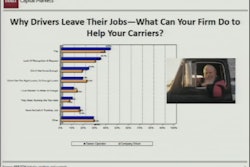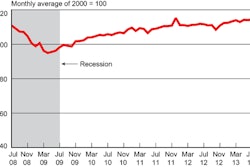As the trucking industry plans to honor drivers for Driver Appreciation Week beginning Sep. 16, FleetRisk Advisors has put together a list to help guide effective fleet manager-driver communications. FleetRisk, a subsidiary of OmniTracs, a Qualcomm company, uses advanced predictive modeling to identify fleets’ at-risk drivers in the areas of safety, workers compensation claims and turnover and what intervention and communication strategies will most likely change the expected outcome.
FleetRisk says fleet managers can use this five-step (Who, What, Why, When, How) guide on an ongoing basis to help ensure driver safety, satisfaction and effective communication.
1) WHO? The relationship between fleet managers and drivers is crucial to the safety, productivity and satisfaction of the driver, and profitability of the entire fleet. Fleet managers that opt to implement a more people-centric approach to driver management will foster a culture of achievement and driver retention.
2) WHAT? Regular and proactive communication is essential to fostering a positive relationship between fleet managers and drivers. Managers should be prepared to have open and honest discussions with their drivers, learn more about their daily lives and examine their satisfaction—and in some cases, regular, proactive communication can prevent a talented driver from walking away from their job.
3) WHY? Because communication between fleet managers and drivers should not be purely transactional. Fleet managers that take the time to personally communicate with drivers in a targeted and efficient manner will help improve driver safety, productivity and overall job satisfaction.
4) WHEN? As the saying goes, timing is everything! Talking to the right driver, about the right topic, at the right time increases the likelihood of a fleet manager being able to pinpoint an at-risk driver, and intervene with a proactive conversation that could prevent a potentially negative event.
5) HOW? The way in which fleet managers approach drivers greatly impacts the result of their conversations. Using a positive and constructive tone when speaking with drivers naturally leads to more impactful results and cements the fact that drivers are valuable assets.











